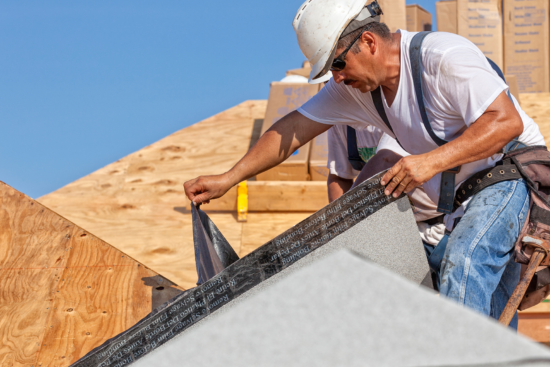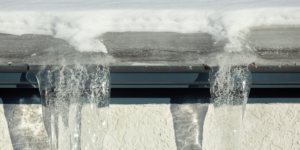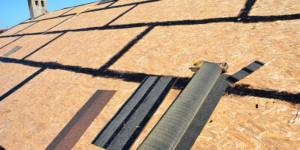© All Rights Reserved | Roof Replacement and Repair - Zaman Roofing LLC. | Website Design & CT SEO Powered by High Point SEO CT
- Google Rating5.0Based on 33 reviewsZaman Roofing - CT Roofing Contractors & Roof Repair5.0Sergey Y."Zaman Roofing” recently completed a roof replacement project in our condo complex, and we are extremely satisfied with their service. From start to finish, their team demonstrated professionalism, efficiency, and exceptional craftsmanship. They were prompt in their communication, providing detailed explanations and answering all our questions. The crew arrived on time, worked diligently, and completed the project within the estimated timeframe.Not only did Zaman Roofing exhibit outstanding technical skills, but they also ensured minimal disruption to our daily activities. They took great care to protect our property, cleaning up thoroughly each day and leaving no trace of debris behind.The quality of the new roof is outstanding. Zaman Roofing used top-grade materials and paid attention to every detail, resulting in a sturdy and visually appealing finished product. The roof has significantly enhanced the overall appearance of our condo complex.We would highly recommend Zaman Roofing to anyone in need of roofing services. Their professionalism, expertise, and attention to customer satisfaction make them a reliable choice for roof replacements. We are grateful for their excellent work and would not hesitate to hire them again in the future.Christopher Z.Zaman Roofing was AWESOME!!!! This is my third time doing a roof in CT on my third home and Zaman did an outstanding job on my rather unique roof line. They even replaced a skylight. I needed a Roof Contract in place before insurance would allow the purchase because the seller was a DeeBag. Zaman worked with my realtor, banker, etc and even waited patiently while the seller delayed the process by 4 months. The week I closed, Zaman Roofing was up and at em. Stripping, prepping and replacing. In and Out. Property was nice and clean after the work was complete. I would highly recommend.Steve TZaman Roofing, located in Berlin, CT, truly excels in providing top-notch roofing services. I am absolutely thrilled to give them a well-deserved 5-star review for their outstanding work. They have proven themselves as experts in roofing Berlin CT, and I couldn't be happier with the results.When it comes to roofing in Berlin, Zaman Roofing stands out from the competition. Their team of skilled professionals demonstrated exceptional attention to detail during the installation of my new roof. They meticulously handled every aspect of the project, ensuring both aesthetics and durability were top-notch.What impressed me the most was Zaman Roofing's commitment to customer satisfaction. From my initial contact with them, they were responsive, courteous, and eager to understand my specific roofing needs in Berlin. Their exceptional customer service throughout the entire process made me feel valued as a client.Zaman Roofing's expertise in roofing Berlin is truly commendable. They have an extensive portfolio of successful projects throughout Berlin, CT, showcasing their skill and knowledge in a variety of roofing styles and materials. Regardless of the complexity of the job, they have the necessary resources to deliver exceptional results.I cannot emphasize enough how satisfied I am with Zaman Roofing's services in Berlin, CT. Their professionalism, reliability, and dedication to their craft are unparalleled. If you're searching for exceptional roofing services in Berlin CT, Zaman Roofing is the company to choose. They will exceed your expectations in every way.In conclusion, Zaman Roofing unquestionably deserves a stellar 5-star rating for their exemplary roofing services in Berlin, CT. Their expertise in roofing Berlin and roofing Berlin CT shines through in their exceptional workmanship and customer service. I highly recommend Zaman Roofing for all your roofing needs.Gary G.Zaman replaced the roof on my 2,200 sq. ft. colonial in 2015. The workmanship was perfect. Unfortunately, over time, the top-of-the line shingles discolored. He was totally supportive in getting the manufacturer to replace them at no cost to me. He just replaced the roof with the new shingles. It was another perfect job. It was completed in one day. The crew was great and they cleaned the area spotless.Chris DWe used Zaman Roofing for our Roof and Gutter Replacement, I acquired 5 quotes for the work and found Zaman to be the most reasonable, it was a Good Decision to choose Zaman Roofing, Seweryn was Professional in every aspect and the Clean-up was nothing short of Amazing, I would Highly Recommend using Zaman RoofingRobert D.Excellent Service and Value - great crew and easy to deal with - highly recommended !Sunghoon P.Great work and reasonable price. I am so happy with their service. I asked a bunch of questions before and after the service and his responses were very prompt and straight to the point. Highly recommend.Adrienne M.I am so pleased that I used this company. My new roof looks fantastic. Such a hard working crew. Seweryn was informative and professional. Price was very completive. Don't hesitate to use them you will be very satisfied. Highly recommend!Nancy M.Good communication, timely response and knowledgeable. Very happy with our experience and highly recommend this company.Beata M.We used Zaman for our roof replacement recently and are very pleased. They replaced our roof in one day and gave us a very competitive quote. Good quality of work. Highly recommended.Lori K.They were here when they said they would. Professional & left everything neat ,cleaned up everything. They were in & out in a day & a half. Would recommend Zaman roifing.Dan R.A+ service, professional and quick response time.Anna G.Zaman and his crew provide great workmanship they installed new roofs they take great pride in the work they do. They were punctual and did a amazing job with the roof installation and clean up. Highly recommend Zaman Roofing to family and friends. Thank you for the opportunity to work with such a amazing contractorScott M.Awesome contractor, I would highly recommend him to family & friends. Seweryn & his crew were here on time & worked diligently. They were the happiest workers I've ever dealt with (I am a former construction project manager with the Federal government). Any & all questions were answered. My neighbors couldn't believe they finished the job in one day & complimented how great the new roof looks.Clement D.Great roofing contractors. I love to recommend it to my friends and family.Karen 9.With the quality, price, timeliness, all round nice guy and great crew, Zaman Roofing LLC is what other companies aspire to be.... Clean, helpful and a pleasure to recommend....james C.Excellent experience from start to finish, all appointments and work times met in a timely fashion, workmanship and clean up left nothing to be desired.Would be a definite recommendation, very pleased.Margaret B.I had obtained multiple quotes and did my due diligence research and Seweryn Zaman came back with fair price and good recommendations. He was professional, explained everything that he was going to do and never once he rushed me during decision process. He showed up on time with his hard working crew and finished my roof in one day. I was amazed with his crew who worked like busy bees. Very impressed with the clean up process and the end product. Two months after he finished my roof he was still helping me deal with the insurance company making sure I had everything I needed. Thank you SewerynSteve B.Very professional and easy to work. The crew came in, replaced my roof and then cleaned up everything! Highly recommended.Jim O.Competitive quote among four others. Seweryn Zaman provided larger color samples of the shingle colors we were interested in. He obtained the building permit, showed up on the day expected with his entire crew. Our older roof was on 24" trusses and needed more plywood replaced than anticipated. He got the additional sheets replaced on the day of the re-roofing. The crew worked with him late until the job was done and picked up every piece of old debris. The roof passed final town inspection with no concerns. Zaman Roofing is easy to deal with; he's responsive on text messages and phone calls. I used them in the past for an emergency repair and he found a well-hidden leak from the builder.Dale C.The crews did a good job, and the leader of the crew did a great job when they replaced the roof of my house in Farming on 7/6&7 this year. When they worked on the project, they worked professionally and in detail. We are very pleased with the work they have done, and highly recommend people to have the company worked on their roof projects.Forrest B.Zaman's was very professional, excellent quality of work and very responsive to our needs. This roofing experience was excellent from start to finish and provided an excellent value. Would certainly recommend them to any friend.Yonatan M.We used Zaman Roofing to replace our roof in 2019 and could not be happier with the service and product. A highly professional company and great personal interaction with the owner. The workers took great care of our landscaping, and the owner was there frequently to supervise the work and take care of finishing touches like flashing the chimney. We have had zero issues since then and highly recommend this company.Quinn V.Zaman was awesome. He was communicative, on-time, and was able to give me a quick inspection of our roof despite the rain. I rarely have a contractor tell me that I didn't need to spend any money, but Zaman told me my roof was fine for the next several years.magdalena K.We recently used Zaman Roofing to replace our 26-year-old roof. Right from the start they were great! Sevy was extremely professional and knowledgeable and gave us a great quote. Everything was done as they described and the final project looked great. The owner was on the job from start to finish as he promised.Ariadna G.Our experience with Zaman Roofing was excellent. I was very impressed with both their work and their customer service. Seweryn was very knowledgeable and professional.Larry G.What a wonderful business. Very responsive. They showed up exactly when expected, completed the project quickly and accurately and left no trace after clean up. All with a very competitive price. I would highly recommend Zaman to anyone looking to have roofing work done.STEVE R.I was very pleased with the roof and gutter repairs performed by Zaman Roofing on two of my buildings. Good workmanship and fair prices, I would recommend and use again.Danielle D.These guys stripped and reshuffled my roof is 1 day! They did an awesome job. Roof is beautiful. He uses a dump trailer which is great and they cleaned up well. Very happy with the work. Also pricing was fair.

What Does a Roof Underlayment Do for Your House?
Category: Roof Maintenance • February 8, 2024
An integral part of any roofing system is the roof underlayment. This material is directly put on the roof deck before applying the final roofing material. The primary role of roof underlayment is to insulate and soundproof the roof, increase energy efficiency, extend the roof’s life, and protect it from water damage. You need roof underlayment for the structural stability of your roof and the long-term performance of your home.
Preventing Damage from Water
The primary function of a roof underlayment is to prevent water damage from happening. So, it keeps the water from getting through the roof deck and the roofing material. This is particularly significant in areas typically struck by heavy snowfall or rain. If no roof underlayment is installed, water can seep through the roofing material, thus damaging your home structure.
The structural integrity of your roof and avoiding costly repairs depend on how well you keep water damage at bay. To protect against water infiltration and damage, install a top-quality roof underlayment that seals all cracks and openings in the roofing system. You can ensure your property is protected against water damage by investing in high-quality roof underlayment.
Maximized Energy Savings
The function of roof underlayment is to avoid water damage and make your home more energy efficient. It aids in reducing heat transfer between the interior of your house and the outside by adding an extra layer of insulation. It implies that you will not run your air conditioners as often as in the summer; hence, less heat will come into your homes. In addition, you will spend less money heating the house in winter since less heat will escape.
Energy-efficient roofs give many benefits to homeowners. It not only heats the house but also reduces energy consumption and utility bills. Whether summer or winter, an insulated roof will make the inside temperature constant, irrespective of the weather outside. An energy-efficient roof will pay for itself in the long run since it increases your home’s value.
Increased Sturdiness and Lifespan
The advantages of roof underlayment include the fact that it can extend the life of your roof and it can also make it last much better. The underlayment protects against environmental risks such as debris, strong winds, and ultraviolet light. Roofing materials are more protected from the elements; hence, they last longer and need fewer repairs or replacements.
You will extend the life of your roof and keep it in mint condition if you buy an excellent roof underlayment. Your roofing system will be more durable due to the additional strength and resilience it gives. In such places, this becomes even more important. A long-life underlayment will comfort you, knowing that your home is weatherproof.
Insulation and Soundproofing
A roofing underlayment can serve more than to keep water and debris out; it can also minimize noise and heat loss. This additional material layer functions as a sound absorber and dampener, reducing ambient noise. If your home is in a noisy area or near a major road, this will bring the most value to you. Lower the outside noise and make your home more comfortable with the soundproof roof.
Various Roof Underlayment Options
There are many kinds of roof underlayment on the market, each with pros and cons. The most common are asphalt-saturated, synthetic underlayment, and rubberized asphalt underlayment.
An old and widespread underlayment material is asphalt-saturated felt. The organic or fiberglass parts are wetted with asphalt to make them stronger. You can protect your belongings from water damage with asphalt-saturated felt, and it’s also cheap. That being said, it is less durable than other underlayment options and is easier to tear.
The roofing industry is witnessing increased synthetic underlayment, a more modern alternative. Composed of synthetic materials such as polyester or polypropylene, it is highly durable and won’t easily rip. Synthetic underlayment is also an excellent water barrier; it is lightweight and easy to install. Nevertheless, the asphalt-saturated felt is a cheaper choice.
A good option for underlayment is rubberized asphalt, which gives long-term protection. Rubber and asphalt polymers used in its manufacture increase its durability and make it more resistant to water and harsh weather. Due to its self-sealing characteristics, rubberized asphalt underlayment prevents water damage by sealing around nails or fasteners. It is the most expensive underlayment option, though.
Installation Value of Expert
It is strongly recommended that homeowners contract a professional to install roof underlayment, even if some may try to save money by doing it themselves. Professional installation ensures correct underlayment installation per the industry standards and manufacturer requirements. This provides its longevity and efficiency, which helps increase its effectiveness.
Issues like underlayment gaps or overlaps due to poor installation decrease the material’smaterial’s water resistance. The lifetime of underlayment is shortened, and the roofing system is put at risk when improper installation methods cause premature wear and tear.
Only a professional with the needed training and experience should be relied upon regarding roof underlayment installation. They know what underlayment is best suited for roofs and will install it per the manufacturer’s specifications.
Lastly, an underlayment is a must while installing a roof. It offers many benefits, including resistance to water damage, better energy efficiency, increased lifetime and durability, and insulation and soundproofing. You can protect your property and enjoy its benefits for years by buying quality underlayment and installing it with experts. Investing in roof underlayment will give long-term benefits such as lower energy bills, more comfort, and less stress.




